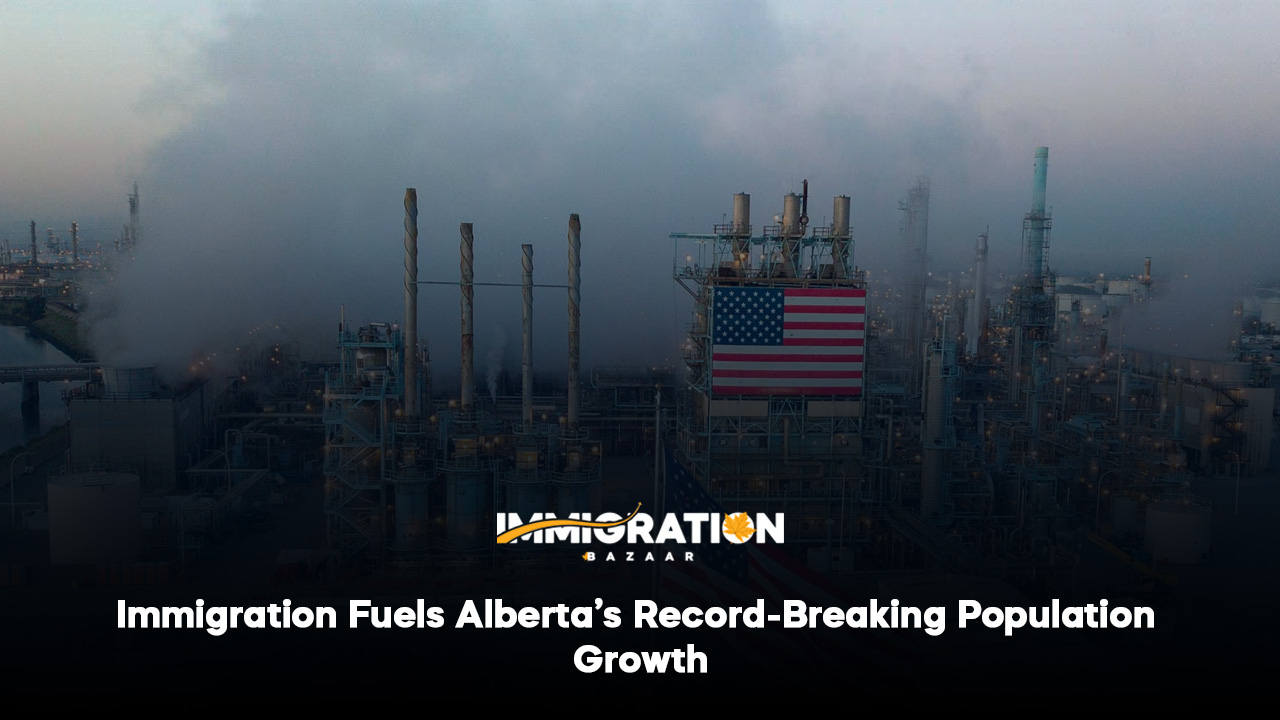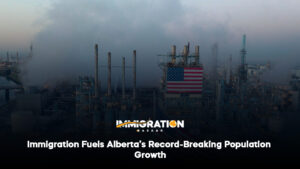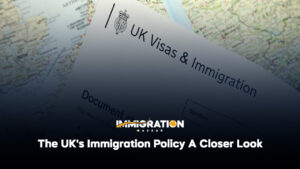Alberta, one of Canada’s most economically vibrant provinces, is experiencing unprecedented population growth, largely fueled by immigration. In 2024, the province recorded a significant increase in its population, primarily attributed to an influx of international migrants seeking better job opportunities and quality of life. This population boom is not just a statistic; it has profound implications for Alberta’s economy, labor market, and social landscape. This article will explore the factors contributing to Alberta’s population growth, the economic opportunities that attract newcomers, the role of interprovincial migration, and the overall impact on the province.
-
Overview of Population Growth in Alberta
Alberta’s population growth has been remarkable in recent years. According to the latest statistics, the province’s population increased by over 200,000 people in 2024, a significant jump compared to previous years. This growth rate is one of the highest in Canada, showcasing the province’s ability to attract newcomers and retain its residents.
1.1 Statistics and Trends
- Population Milestone: In early 2024, Alberta surpassed the 4.5 million mark in population, a notable milestone attributed to both international immigration and interprovincial migration.
- Immigration Rates: Immigration accounted for over 70% of the province’s population growth. This influx includes skilled workers, international students, and family reunifications, reflecting Alberta’s diverse immigration landscape.
- Demographic Changes: The growth has also led to demographic shifts, with an increase in younger populations, enhancing the province’s labor market potential.
-
Factors Driving Immigration to Alberta
Several factors make Alberta an attractive destination for immigrants:
2.1 Strong Economy
Alberta’s economy is one of the most robust in Canada, characterized by:
- Diverse Industries: While oil and gas remain critical, the province has diversified its economy to include technology, agriculture, and renewable energy sectors.
- Job Opportunities: Alberta boasts one of the lowest unemployment rates in the country, with job vacancies in numerous sectors, especially in healthcare, engineering, and skilled trades.
2.2 Affordability and Quality of Life
- Cost of Living: Compared to other major Canadian cities like Vancouver and Toronto, Alberta offers a relatively lower cost of living, making it easier for newcomers to establish themselves.
- High Quality of Life: With access to healthcare, education, and recreational facilities, Alberta is perceived as offering a high quality of life, appealing to families and young professionals.
2.3 Welcoming Immigration Policies
The provincial government has implemented several initiatives to attract and support immigrants:
- Alberta Immigrant Nominee Program (AINP): This program allows the province to nominate individuals for permanent residency based on labor market needs, streamlining the immigration process for skilled workers.
- Support Services: Various organizations and community programs offer support for newcomers, including language training, job placement services, and integration assistance.
- Interprovincial Migration: A Complement to Immigration
In addition to international migration, Alberta has seen an influx of residents from other Canadian provinces:
3.1 Reasons for Interprovincial Migration
- Economic Opportunities: Many Canadians from provinces with higher unemployment rates are relocating to Alberta for job prospects, particularly in the energy and technology sectors.
- Lifestyle Changes: Alberta’s lifestyle, characterized by outdoor activities and a sense of community, attracts individuals looking for a change from urban centers with high living costs.
3.2 Impact on Local Communities
- Population Diversity: Interprovincial migration contributes to the province’s cultural diversity, enriching local communities and fostering social cohesion.
- Economic Contributions: New residents contribute to the local economy by filling job vacancies and supporting businesses, thereby enhancing economic development.
-
Challenges Associated with Rapid Population Growth
While Alberta’s population growth has numerous benefits, it also poses challenges that need addressing:
4.1 Housing Shortages
- Increased Demand for Housing: The rapid influx of people has led to increased demand for housing, resulting in rising rental prices and housing shortages in major cities like Calgary and Edmonton.
- Urban Planning: The government must implement effective urban planning strategies to accommodate the growing population without compromising the quality of life.
4.2 Infrastructure Strain
- Public Services: The surge in population puts pressure on public services, including healthcare, education, and transportation. Ensuring these services keep pace with growth is essential for maintaining quality of life.
- Investment in Infrastructure: Significant investment is needed in infrastructure development to support the growing population, particularly in transportation and community facilities.
-
Economic Implications of Population Growth
Alberta’s record-breaking population growth has substantial economic implications:
5.1 Labor Market Enhancement
- Addressing Labor Shortages: The influx of skilled workers helps alleviate labor shortages in critical industries, ensuring businesses can operate effectively and contribute to economic growth.
- Boosting Innovation: A diverse workforce brings various skills and perspectives, fostering innovation and enhancing the province’s competitive edge.
5.2 Economic Growth and Development
- Increased Consumer Spending: A growing population leads to increased consumer demand, benefiting local businesses and driving economic growth.
- Investment Opportunities: The population boom attracts investments in various sectors, including real estate, retail, and technology, further bolstering the economy.
-
Social and Cultural Impact
The demographic changes resulting from immigration and interprovincial migration significantly influence Alberta’s social and cultural landscape:
6.1 Cultural Diversity
- Cultural Enrichment: The arrival of immigrants from diverse backgrounds enriches Alberta’s culture, introducing new traditions, cuisines, and perspectives.
- Community Integration: Efforts to promote integration and social cohesion are vital for creating inclusive communities where everyone can thrive.
6.2 Education and Multiculturalism
- Educational Opportunities: The influx of international students contributes to the province’s education sector, enhancing its reputation as a global education hub.
- Multicultural Policies: Alberta’s commitment to multiculturalism fosters an inclusive society, ensuring that newcomers feel welcomed and valued.
-
The Role of Education in Immigration
Education plays a crucial role in attracting immigrants to Alberta:
7.1 International Students
- Study Programs: Alberta’s universities and colleges offer a range of programs that attract international students, who often choose to remain in the province after graduation.
- Pathways to PR: Many educational institutions provide pathways for international students to transition from study permits to permanent residency, supporting the province’s immigration goals.
7.2 Skill Development
- Training and Certification Programs: Alberta offers various skill development programs that help immigrants acquire the necessary qualifications to thrive in the local job market.
-
Government Initiatives and Future Outlook
The Alberta government is actively working to manage the challenges and opportunities associated with population growth:
8.1 Strategic Planning
- Long-term Growth Strategies: The government is developing strategies to manage population growth sustainably, focusing on housing, infrastructure, and public services.
- Investment in Infrastructure: Ongoing investment in infrastructure projects is crucial for supporting the growing population and enhancing quality of life.
8.2 Sustaining Economic Growth
- Fostering Innovation: The government is committed to fostering innovation and attracting investments to ensure long-term economic sustainability.
- Supporting Immigrant Integration: Continued support for immigrant integration programs is essential for ensuring that newcomers contribute positively to Alberta’s economy and society.
Conclusion
Alberta’s record-breaking population growth is a testament to the province’s attractiveness as a destination for immigrants. The combination of a strong economy, affordable living, and supportive immigration policies has made Alberta a beacon for newcomers seeking better opportunities. While the rapid population growth presents challenges, such as housing shortages and infrastructure strain, it also offers significant economic benefits and cultural enrichment.
Moving forward, Alberta must continue to embrace its diverse population, implement effective strategies for sustainable growth, and ensure that both newcomers and long-time residents can thrive together in a vibrant and inclusive society. The ongoing efforts to balance immigration with local needs will be critical in shaping the future of Alberta and maintaining its status as one of Canada’s most dynamic provinces.







